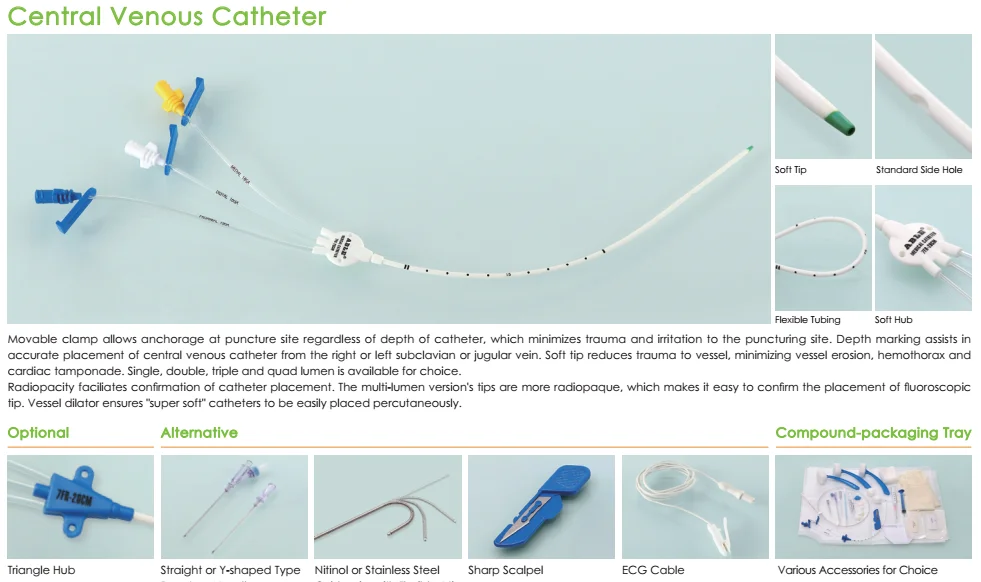


The material of the cuff also decreases infection risk because it is soaked in antibacterial. Bacteria must travel further past the cuff to cause infection, rather than going straight into the vein like in the case of a PICC line. They provide a barrier between the line site and the vein. The Broviac line is the pediatric version of a Hickman. The most common types of tunneled lines are a Hickman or a Broviac. The cuff is an antibacterial barrier that holds the line in place.
#TRIPLE LUMEN CENTRAL LINE SKIN#
They are tunneled under the skin with a cuff. Tunneled lines are inserted into the chest, leading into the artery (superior vena cava) in the heart to deliver intravenous medications necessary for long term. The Bard Power PICC does not have clamps and heparin use is not as imperative.

With clarification, it will not be! PICC LineĪ PICC line is a small, IV catheter inserted into the middle upper arm and leads to the main artery (superior vena cava) in the heart. What line is best? Ports, PICC lines, Hickmans, Broviac-the terminology is initially overwhelming. There are numerous lines that are better suited. Thankfully, enduring intravenous therapies at home do not entail dealing with finicky, painful, and unreliable IVs. You await the reprieve of discharge, a relief.īut then you learn that some patients do not have the opportunity to abandon all IV treatments at the hospital-you just never thought it would be you. After the second IV in your mid-arm goes, the nurse plots the next spot of attack as her eyes scan your wrist. The intense treatment begins to burn your tiny veins. The pump screams “occlusion” with the movement of your arm, which makes even browsing the web on your laptop a game of acrobatics. (2.8 mm) x 10.You are inpatient at the hospital. x 1-1/2" (3.81 cm) and 5 mL Luer-Slip Syringe x 1" (2.54 cm) and 3 mL Luer-Lock Syringe x 2-1/2" (6.35 cm) XTW and 5 mL Arrow ® Raulerson Spring-Wire Introduction Syringe x 23-5/8" (60 cm) (Straight Soft Tip on One End - "J" Tip on Other) with Arrow AdvancerĬatheter: 18 Ga.

#TRIPLE LUMEN CENTRAL LINE PLUS#
x 20 cm Pressure Injectable Radiopaque Polyurethane with Blue FlexTip ®, ARROWg+ard Blue PLUS ® Antimicrobial Surface Treatment 1, Extension Line Clamps


 0 kommentar(er)
0 kommentar(er)
